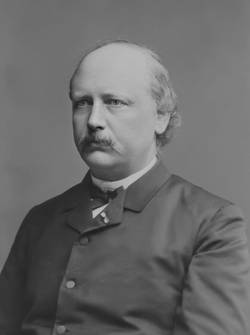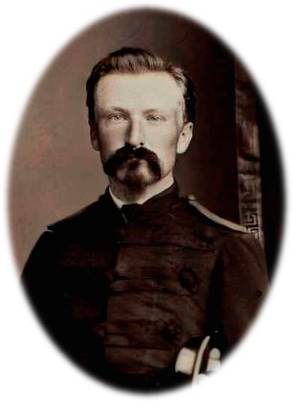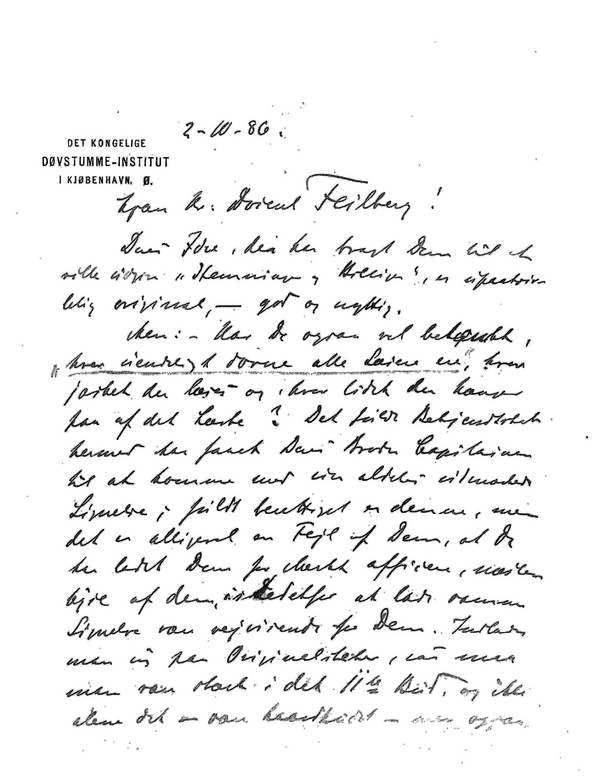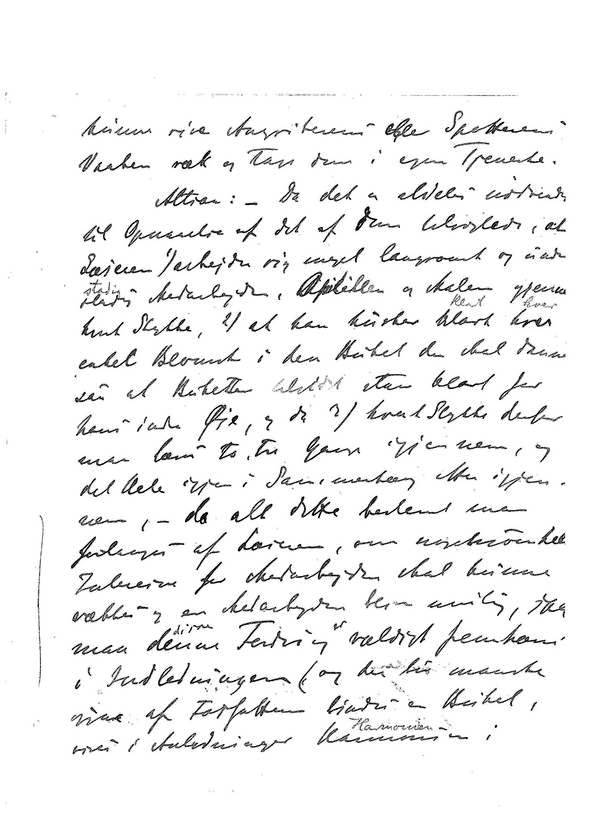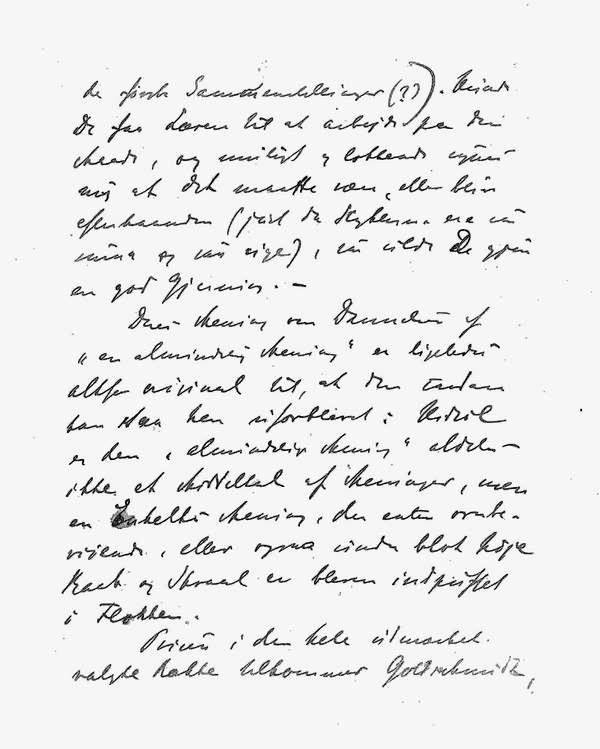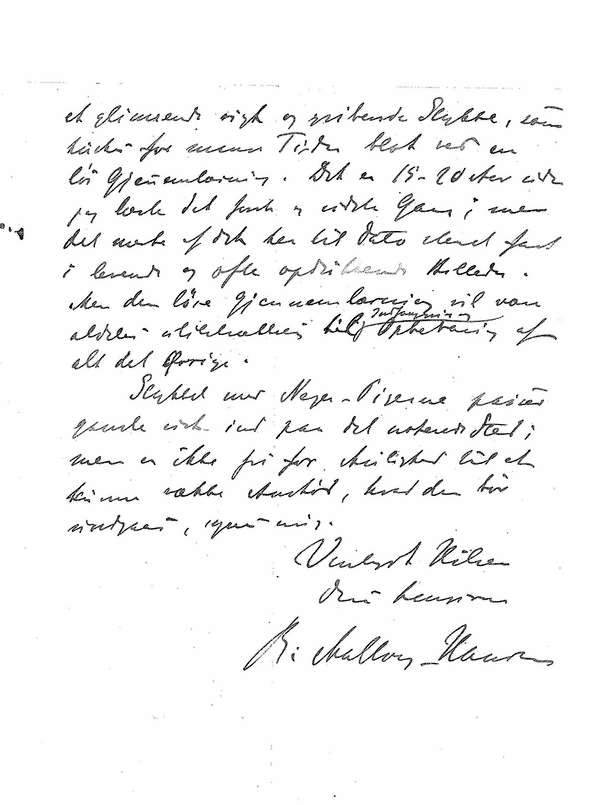1886.10.02 English
2-10-86
THE ROYAL INSTITUTE
FOR THE DEAF-MUTE
COPENHAGEN
Dear Mr Feilberg
Your idea which has generated the wish to publish “Moods and Pictures” [1] is undoubtedly original, - also good and useful. However: - Have you really taken into account how infinitely lazy all readers are, how sloppily texts are read – and how little is remembered of that which was learned? The full acquaintance with these circumstances has made your brother, the captain, utter his excellent metaphor [2]; while his comparison is fully justified, it is still an error on your side that you have allowed yourself to be affected so strongly, almost yielding, instead of letting this metaphor merely direct you. When one embarks on originalities, one must be strong in terms of the 11th commandment [3], and not only that - be callous – but also be able to tear away the weapons of the assailant or the scorner and employ them in your own service.
In other words: Since it is absolutely essential for attaining what you are intending – that the reader 1) works very slowly and continuously collaborating, with fondness and grinding through each passage, 2) so that he remembers clearly each individual flower in the bouquet about to be formed, in order for the bouquet finally to appear in a clear light for his inner eye, and when 3) each passage therefore has to be read two, three times, and then again the whole text in its context once again, when all of this definitely has to be required from the reader if any kind of collaboration is to be aroused – and if this kind of collaboration is to be made feasible, then these requirements and demands must be made exceedingly clear in the preface (and perhaps clarify that the author is tying a bouquet and show it in the opening harmony in the initial comparisons ? ?[4])
If you could induce the reader to work and collaborate in this way, and indeed it seems to me to be both feasible and tempting, at least over time (precisely because the text passages are so short and so rich) you would be doing a good deed.
Your opinion concerning how the “public opinion” is being created is, likewise, far too original to be left undisputed; so far, the “public opinion” is most definitely not equal to an average of opinions but rather the opinion of a single individual, either very persuasive or simply having been hammered into the flock with much hullabaloo.The best essay of the very well selected lot is the one on Goldschmidtz, a brilliantly rich and poignant piece, something one will remember for a very long time even by a quick reading. It must be 19-20 years ago since I read it; but most of it has until now remained with me in vivid and frequently emerging pictures. However, a quick reading will be completely inadequate for catching and keeping all the remaining passages and aspects.
The passage with the Negro girls does fit where you have inserted it; however, there is a risk that it might cause offense – something that ought to be avoided, and once again I agree.
Yours sincerely
andbe devoted
R. Malling-Hansen
[1] SA: Ludvig Feilberg, 1849-1912. His full name was: Ludvig Tage Christian Müller Feilberg. He was a philosopher and famous for his “philosophy of life” – and is considered by many to be Denmark’s first “researcher of psychology”. The book referred to by RMH was published in 1886 and was entitled: “Moods and Pictures in Harmonious Order: An Aesthetic-psychological First Attempt ”, and this is the book RMH is referring to in such critical terms in the present letter.
[2] SA: One of RMH’s very good friends, Gustav Johan Ludvig Feilberg (1835-1895), a captain and a keeper of the archives in the Ministry of War (as it was known at the time). He features in the painting of the friends playing L’hombre. As far as we know, he was a brother of Feilberg the philosopher.
[3] CB: The 11th Commandment – does anybody know what this is?JMC: There are scores of versions of the 11th commandment, and there is no way we may know, unless we find a reference, what kind of meaning RMH attached to this concept.
[4] CB: These two questions marks are RMH’s. However, this handwritten letter is extremely difficult to make out – RMH’s handwriting is more sloven and flatter than usual – and hence even more illegible than usual – which is saying a good deal!

